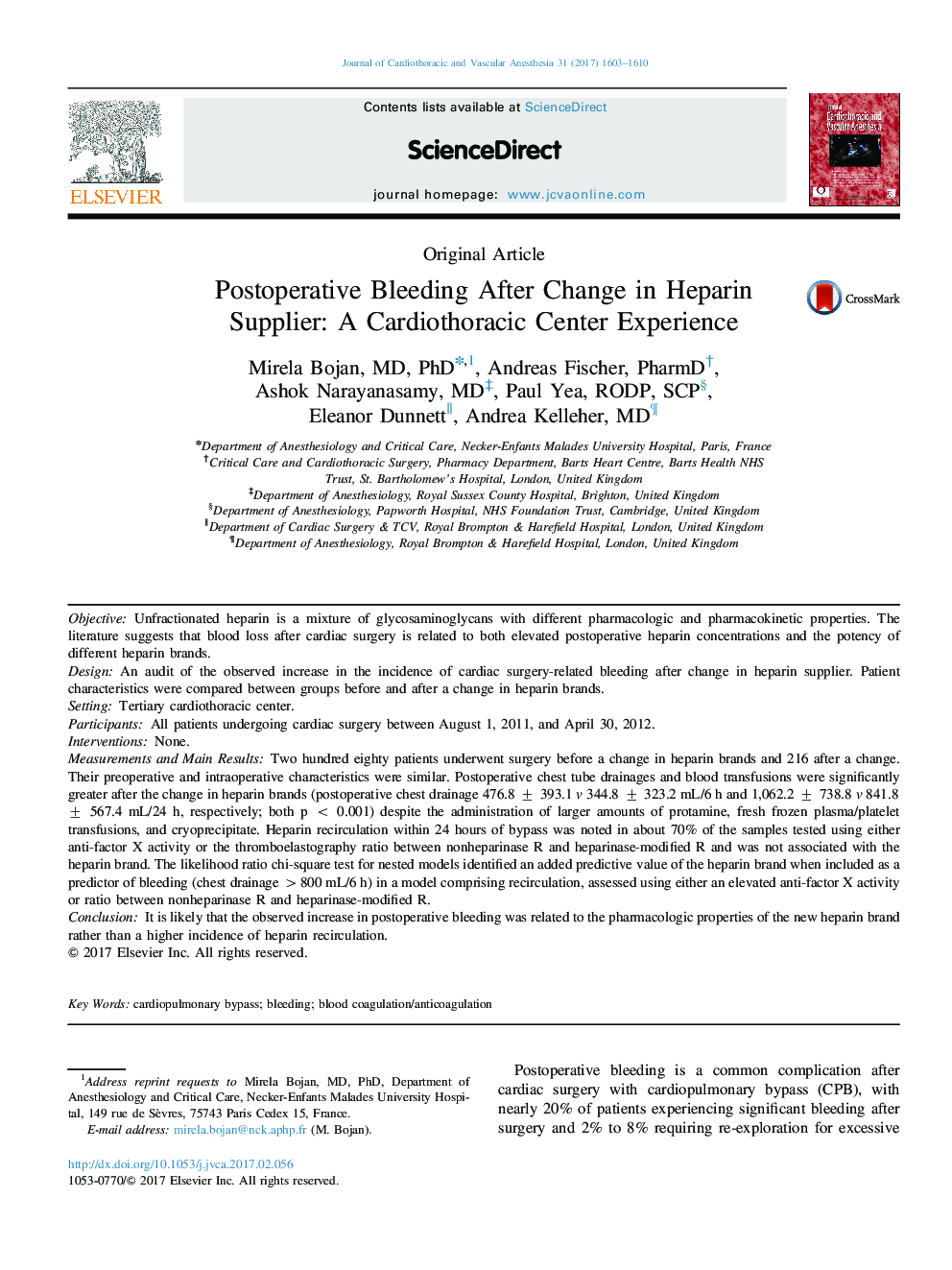| کد مقاله | کد نشریه | سال انتشار | مقاله انگلیسی | نسخه تمام متن |
|---|---|---|---|---|
| 5582259 | 1567599 | 2017 | 8 صفحه PDF | دانلود رایگان |
ObjectiveUnfractionated heparin is a mixture of glycosaminoglycans with different pharmacologic and pharmacokinetic properties. The literature suggests that blood loss after cardiac surgery is related to both elevated postoperative heparin concentrations and the potency of different heparin brands.DesignAn audit of the observed increase in the incidence of cardiac surgery-related bleeding after change in heparin supplier. Patient characteristics were compared between groups before and after a change in heparin brands.SettingTertiary cardiothoracic center.ParticipantsAll patients undergoing cardiac surgery between August 1, 2011, and April 30, 2012.InterventionsNone.Measurements and Main ResultsTwo hundred eighty patients underwent surgery before a change in heparin brands and 216 after a change. Their preoperative and intraoperative characteristics were similar. Postoperative chest tube drainages and blood transfusions were significantly greater after the change in heparin brands (postoperative chest drainage 476.8 ± 393.1 v 344.8 ± 323.2 mL/6 h and 1,062.2 ± 738.8 v 841.8 ± 567.4 mL/24 h, respectively; both p < 0.001) despite the administration of larger amounts of protamine, fresh frozen plasma/platelet transfusions, and cryoprecipitate. Heparin recirculation within 24 hours of bypass was noted in about 70% of the samples tested using either anti-factor X activity or the thromboelastography ratio between nonheparinase R and heparinase-modified R and was not associated with the heparin brand. The likelihood ratio chi-square test for nested models identified an added predictive value of the heparin brand when included as a predictor of bleeding (chest drainage >800 mL/6 h) in a model comprising recirculation, assessed using either an elevated anti-factor X activity or ratio between nonheparinase R and heparinase-modified R.ConclusionIt is likely that the observed increase in postoperative bleeding was related to the pharmacologic properties of the new heparin brand rather than a higher incidence of heparin recirculation.
Journal: Journal of Cardiothoracic and Vascular Anesthesia - Volume 31, Issue 5, October 2017, Pages 1603-1610
